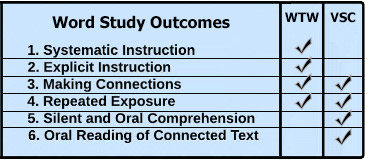It's odd to me that there isn't more work on this top down view....
This is just one way of estimating, I'd like to dig in and cross reference a few data sources on charter school statistics as well as virtual school stats.
Estimate of K12 in 2017
Total 57,623,100
Public Schools: 50,477,000 An estimate of 3,240,000 in charters.
Homeschooling: 2,088,600
Private Schools: 5,057,500
Trends:
Charter School growth has been 180K per year.
Private schools are shrinking by 85K per year.
Homeschoolers are growing by 71K per year.
Data Sources - This data is built on rough estimates projecing forward historical trends on a straight line basis with no correction for population size changes.
Public Schools - NCES - Projection of 2017 by NCES
Charter school - nces - 2,700,00 in 2014. Growth from 0.9 to 2.7 2004 to 2014. This is 1.8 over 10 years or 180K new each year on a straight line. Adding three more years or 3 x 180,000 produces an estimate for 2017 of 3,240,000. Data from Charter school groups could be used but
Private Schools - NCES - The number declined from 6,073,000 in 2005 to 5,396,00 in 2013, a decline of 677,000 over 8 years or 84,625 per year. Projecting the same absolute number loss per year, an estimate of a loss of 338,5000 over 2014-2017, 5,057,500 in 2017
Homeschooling: NHES. Estimate of 2,088,600 based on 1.77M (2012) increased by 18% since that was the growth reported over the previous 5 year period. This is projecting a historical trend forward.
The NHES survey says that 1.77 million students were homeschooled in 2012, which is an 18% increase since the last study in 2007. In fact, the number of homeschooled children has been steadily increasing each year, and is expected to continue to rise. This is an increase of what number per year????
NHES says 850,000 students in 1999 to 1,773,000 students in 2012: 923,000 over 13 years 0r 71K per year. 5 x 71K is a 355,000 increase or estimate of 2,128,000. This approach is 100K more than the other one for estimating.
NHES says 850,000 students in 1999 to 1,773,000 students in 2012: 923,000 over 13 years 0r 71K per year. 5 x 71K is a 355,000 increase or estimate of 2,128,000. This approach is 100K more than the other one for estimating.
The most recent Federal Government study concluded that about 3.4% of the K-12 students or 1.77 million students were being homeschooled in the United States as of spring 2012. The study was performed by the National Household Education Survey Program (NHES) and the results are available on the Dept of Education Website as part of the National Centers for Educational Statistics.
x
Discussion NCES
x
Discussion NCES
CERN _ here are more than 6,800 charter schools serving nearly 3 million children across the country (February 2016)

